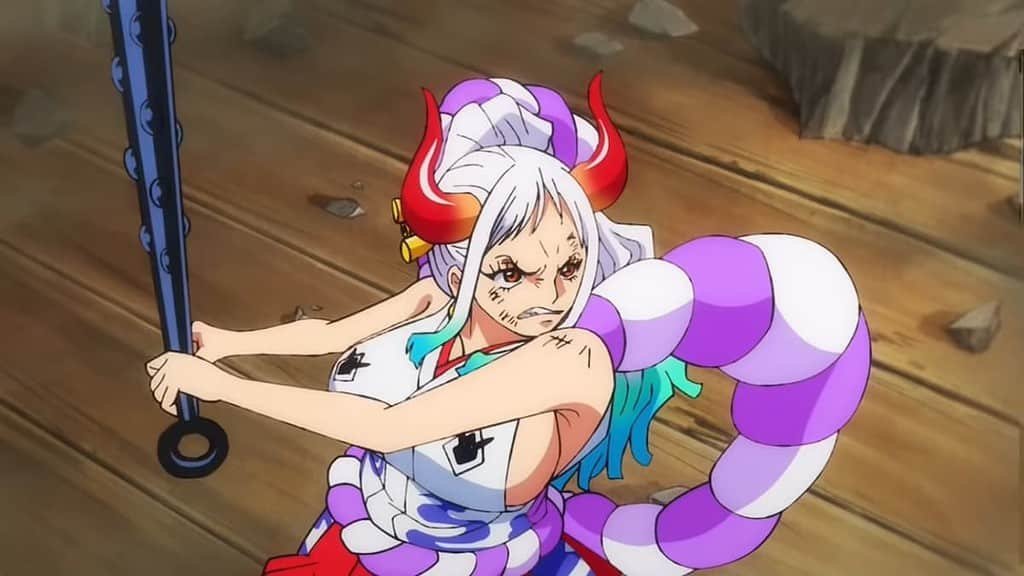One Piece, the beloved manga and anime series created by Eiichiro Oda, has captivated audiences worldwide with its richly imagined world, diverse characters, and epic adventures. Among the myriad characters that populate the One Piece universe, Yamato stands out as a particularly intriguing figure, not least because of the ambiguity surrounding their gender.
Yamato is introduced in the Wano Country arc, a sprawling narrative arc set in the isolated nation of Wano. The character’s gender identity quickly becomes a topic of speculation among fans due to the ambiguity in their presentation. While Yamato is referred to with masculine pronouns by some characters, others opt for gender-neutral terms. This deliberate ambiguity has sparked discussions and debates within the One Piece fandom regarding Yamato’s true gender identity.
At first glance, Yamato presents as male, both in appearance and demeanor. They are physically imposing, with broad shoulders and a muscular build reminiscent of other male characters in the series. Additionally, Yamato idolizes the legendary pirate Kozuki Oden, going as far as to emulate his appearance by wearing similar clothing and styling their hair in a distinctive manner. These characteristics contribute to the perception of Yamato as male.
However, as the story progresses, hints are dropped that suggest a more complex understanding of Yamato’s gender identity. Despite presenting as male, Yamato expresses a desire to be referred to as Kozuki Oden’s son, even though Oden’s biological children are daughters. This discrepancy raises questions about Yamato’s self-perception and the extent to which they adhere to traditional gender roles.
Furthermore, Yamato’s interactions with other characters provide additional layers to their gender identity. While some characters, such as the protagonist Monkey D. Luffy, refer to Yamato using masculine pronouns, others, like Nico Robin, opt for gender-neutral language when addressing them. This linguistic choice reflects a level of respect for Yamato’s identity and acknowledges the complexity of gender within the One Piece world.
Eiichiro Oda’s decision to leave Yamato’s gender ambiguous is consistent with his approach to character development and world-building. Throughout One Piece, Oda challenges conventional norms and expectations, crafting characters who defy stereotypes and embody a diverse range of identities. By leaving Yamato’s gender open to interpretation, Oda invites readers and viewers to consider the fluidity of gender and the importance of accepting individuals for who they are.
Ultimately, the question of Yamato’s gender may never receive a definitive answer within the confines of the One Piece narrative. And perhaps that ambiguity is intentional, serving as a reminder that gender is not always easily categorized or understood. Instead, Yamato’s character encourages us to embrace the complexity of identity and to appreciate the diverse array of individuals who populate the world of One Piece.
In the end, whether Yamato identifies as male, female, or non-binary is less important than the impact they have on the story and the themes they represent. As One Piece continues to unfold, fans will undoubtedly continue to speculate about Yamato’s gender, but what remains clear is the character’s undeniable significance in challenging preconceived notions and enriching the tapestry of Oda’s extraordinary world.
FAQs About Yamato’s Gender
1. Is Yamato male or female?
Yamato’s gender is intentionally left ambiguous by the creator, Eiichiro Oda. While Yamato presents as male and is referred to with masculine pronouns by some characters, others use gender-neutral language when addressing them. This ambiguity has sparked speculation and debate among fans regarding Yamato’s true gender identity.
Also Read: Exploring the Enigmatic World of Snapchat Planets
2. Why is Yamato’s gender ambiguous?
Eiichiro Oda’s decision to keep Yamato’s gender open to interpretation aligns with his approach to character development in One Piece. Oda challenges conventional norms and expectations, creating characters who defy stereotypes and embody diverse identities. By leaving Yamato’s gender undefined, Oda encourages readers and viewers to consider the fluidity of gender and the importance of accepting individuals for who they are.
3. How does Yamato identify?
Yamato expresses a desire to be referred to as Kozuki Oden’s son, despite Oden having biological daughters. This discrepancy raises questions about Yamato’s self-perception and the extent to which they adhere to traditional gender roles. Ultimately, Yamato’s identity remains complex and open to interpretation.
4. What pronouns should I use for Yamato?
While some characters in One Piece use masculine pronouns when referring to Yamato, others opt for gender-neutral language. There is no definitive answer regarding which pronouns are most appropriate for Yamato, as their gender identity is intentionally ambiguous. Fans may choose to use the pronouns that feel most comfortable for them when discussing the character.
5. Will Yamato’s gender ever be revealed?
As of now, there is no indication that Yamato’s gender will be explicitly revealed within the One Piece narrative. Eiichiro Oda may choose to maintain the character’s ambiguity to continue challenging societal norms and expectations. Regardless of whether Yamato’s gender is ever confirmed, their significance in challenging preconceived notions and enriching the world of One Piece remains undeniable.
